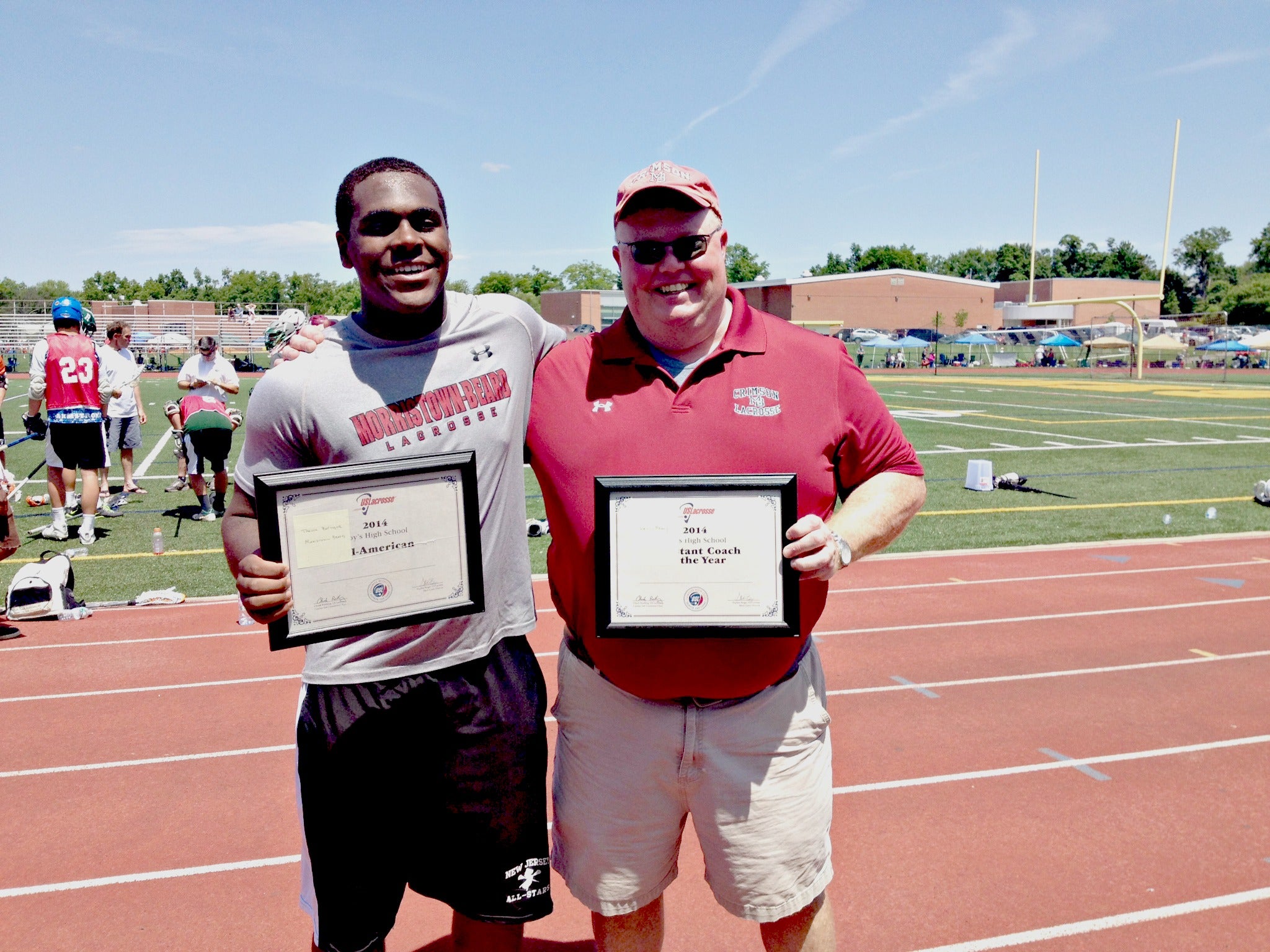Coaches on Coaching: Kevin Meany

As a company of coaches, we believe in the power of sharing from a wide variety of sources. We believe information from different experiences helps propel the game of lacrosse forward. With this introduction to our regular feature Coaches on Coaching, our hope is to tap into how different coaches from around the country show creativity in training, their dedication to the sport and different philosophies, and how they help players improve. First up, meet Coach Kevin Meany:
Getting philosophical about the game and coaching
1. Why your passion for lacrosse? What triggered it?
I’m a little bit of a latecomer to lacrosse. That may sound funny coming from someone who’s been around the game since 1980.
I really didn’t become passionate about lacrosse until I started coaching it. I think most of this was due to the players I was coaching. Watching how excited these high school kids were about the game made me passionate it about it. They were not very good but they were willing to listen and try some of my suggestions. The other piece of the puzzle was my rapid advancement through the coaching ranks. I went from a rookie assistant coach to the head coach in one year. Probably, because I was the only person in the school who had actually seen a lacrosse game. However, I now had players counting on me. I dove into lacrosse at that point. Total immersion. I went to every clinic I could. I started to work at camps and listened to older coaches as much as I could. I read every article and book I could find about lacrosse. I found incredible satisfaction in sharing my limited knowledge of the game with my players. The more I gave, the more I got. Somehow, I seemed to get smarter as my players got better.
I was lucky, I had some terrific mentors and some equally terrific mentees. This was a perfect recipe for developing passion for this game.
 2. What are your thoughts on the impact of quality coaching?
2. What are your thoughts on the impact of quality coaching?
I was incredibly blessed to have played for, and coached with some great coaches, as well as some terrible coaches. I think I may have learned as much from the bad ones as I did from the good ones. Sometimes knowing what not to do can be more important than knowing what to do.
Good coaching is rarely about Xs and Os. It is about caring, connecting, and communicating. Without caring there are no connections. Without connections there is no communication. Players need to know you care.
Our players are smarter than we think. They know when a coach or a grown up is invested. Good coaches check their ego at the door and put the team first. Working with prima donnas is no fun for anyone.
3. How do you talk about the game’s beginnings? What lessons does it teach?
I was lucky to meet Sid Jamieson when I was a young coach working the summer lacrosse camp circuit. Until then I had known vaguely that lacrosse was a Native American game. Coach Jamieson is a member of the Cayuga Nation, who was also the Bucknell University Head Coach for 38 years. He was the first head coach of the Iroquois National Team, and a legend in the lacrosse community. He used to give a 20- to 40-minute lecture (depending on the temperature) about the history of the Creator’s Game and its importance to Native American culture. I would sit through it every opportunity I could. Sid would have anywhere from 50 to 400 hot, tired, sweaty young high school boys totally engrossed throughout the lesson. He was that kind of speaker.
Listening to Coach Jamieson gave me a great appreciation for the native origins of lacrosse that I try to share with my players, especially the youngest ones. Each Monday while I’m running the local summer camp, one of our coaches reads “The Great Ball Game” to all of our K–6 campers. It is the Native American legend of the Creators Game played between the birds and the animals. The hero of the story is the bat who initially wasn’t welcome on either the animals’ team or the birds’ team. The kids seem to enjoy it. We use Native American themes throughout the camp to emphasize the connection of the modern game to its past.
I like sharing the story of the Ojibwe and Sauk tribes using a lacrosse game as a distraction to capture Fort Michilimackinac from the English in 1763. My high school players appreciate the lesson, that losing focus can be fatal. However, the important part of talking about the origins of the game is explaining that this game was believed to be a gift from the Creator, and we should honor it as such. Respect the game.
4. What has been your biggest influence on how to structure training sessions that see results?
My biggest influence has probably been coaching football. Football involves so much attention to detail and provides so much practice time before each contest that coaches are able to break skills down step by step. Taking time to progress through each step might sound incredibly tedious, but I find it very effective. Whether developing skills or installing systems, it is always easier to break things down into manageable mouthfuls. Players all learn at different speeds and in different ways, but I seem to have the most success teaching things in small pieces and then tying them together.
5. How do you balance the need for repetition with the need to understand why they are doing the task?
I don’t really see this as a one or the other type of thing. The idea that players need repetition to master a skill is no big secret. I find that explaining why we are doing things a certain way is helpful on many levels. Personally, I’m a “why” kind of person. I’m interested in “why” we do things a particular way, but I think, and hope, most of my players are interested in the “why” too.
Anything I can use to help or motivate my team to learn something is welcome. If spending a minute or two to explain the “why” of something helps motivate one player learn it the correct way, I’m all for it.
Listening to “This is stupid. Why are we doing this?” and watching uninspired half-hearted reps, makes explaining the “why” of something much more effective than getting in a few more bad reps. Fewer good reps are better than more bad reps.
 6. What is the most creative you have been either using practice location, equipment or drills to make an impact on your players? i.e. making the most of what you have...
6. What is the most creative you have been either using practice location, equipment or drills to make an impact on your players? i.e. making the most of what you have...
A couple of years ago, after a mid-March snow storm, we were looking for a way to get the field clear of snow so we could practice. Shoveling snow is a pretty good way to turn anyone off, so we were hoping to avoid that option. What we came up with was a snowman building contest.
We broke the team into 10 groups of three. Each group got a 10 yard width of the field. The snowmen had to be set up five yards beyond the sideline away from our bench. The winning team got a pizza and a pass on conditioning for one day (the carrot and the stick). The coaching staff judged each snowman on the amount of snow cleared from their area and creativity (did it look anything like a snowman).
The team had a couple of hours of fun competition, some bonding, and a mostly cleared field for practice the next day. A little sunshine did the rest. The end result was 10 piles of snow staring at us from the far sideline until well into April — our own little cheering section.

